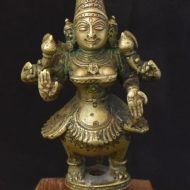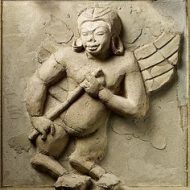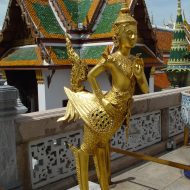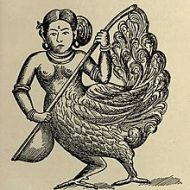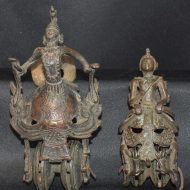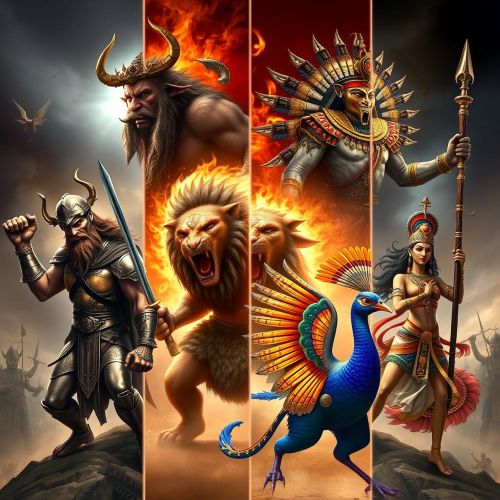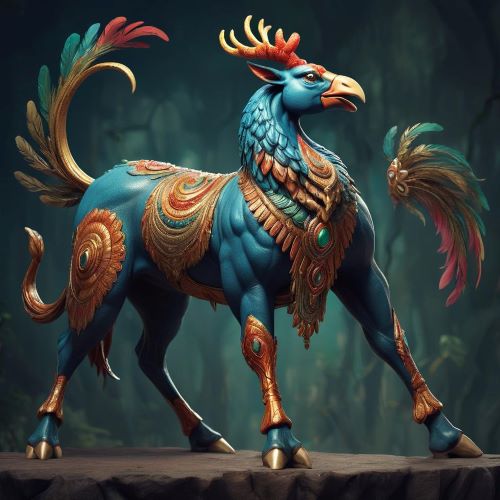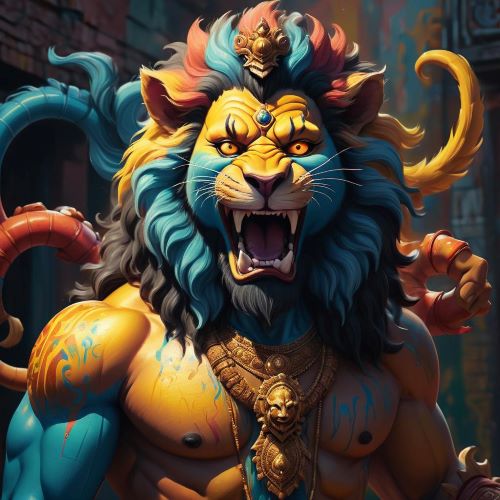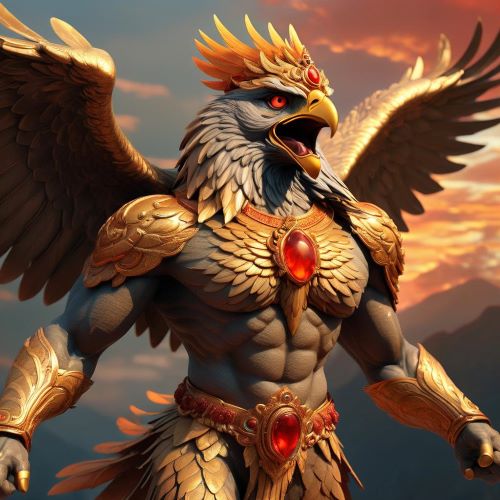Kinnara : The Hybrid Musicians
Listen
At a glance
| Description | |
|---|---|
| Origin | Indian Mythology |
| Classification | Hybrids |
| Family Members | N/A |
| Region | India, Vietnam, Indonesia, Philippines, Burma, Tibet, Thailand, |
| Associated With | Music, Love |
Kinnara
Introduction
The kinnara, a fascinating entity in Hindu and Buddhist mythology, possesses both human and avian traits, entwining themes of music and love within its essence. Emerged from the Himalayan backdrop, these beings dutifully safeguard humanity during periods of turmoil and jeopardy. The antiquity of Indian musical heritage echoes through the Kinnari vina, an age-old stringed instrument named after these creatures. Their true nature comes to light in the Adi Parva of the Mahabharata, where their perpetual devotion is eloquently articulated.
In the realm of East Asian religious art, Edward H. Schafer illuminates the propensity to conflate the kinnara with the Kalaviṅka, another creature merging human and avian attributes. However, Schafer underscores the divergence between these two entities, asserting their independent and distinct identities.
Physical Traits
The kinnaras’ prominence extends to various Buddhist narratives, such as the Jataka tales and Lotus Sutra. Within the tapestry of Southeast Asian Buddhist mythology, the kinnari assumes a complementary role, manifesting as a hybrid of woman and bird. Dwelling within the realm of mythical Himavanta, the kinnari boasts the upper body and arms of a woman, coupled with the wings, tail, and feet of a swan.
Family
References to the Kinnara, a distinct group of demigods or mystical beings, are scattered widely across a vast expanse of Southeast Asia. These references span countries such as Burma, Cambodia, Indonesia, the Philippines, Thailand, Tibet, and India, holding a particular resonance within the realms of Hindu and Buddhist mythology. Their traditional essence revolves around themes of music, love, and their representation as embodiments of feminine, androgynous, or otherworldly beauty. They encapsulate concepts of unwavering commitment, enlightened endeavors, and the ethereal presence of celestial musicians.
In the antiquated landscape of India, the kinnara thrived as an enigmatic tribe nestled within the Himalayan peaks. Elevated beyond mere mortals, they took on an almost superhuman aspect, emerging as protectors of humans when adversity loomed. Originating from the ranks of Ila, a figure fated to shift between male and female forms due to a transgression on sacred grounds, their transformational nature was a monthly dance of change.
Other names
The kinnara is recognized under various names, including Keinnaya, Kinnara, Kenar, Kinnaree, Miamch, and Shang-Shang. Additionally, the female counterpart, known as Kinnari, is also referred to as Keinnayi and Kinnari.
Powers and Abilities
Celebrated for their entrancing dances, melodious songs, evocative poetry, and mastery of diverse instruments—including the resonant drum, melodic lute, mellifluous flute, enchanting cymbals, and the storied Kinnari vina—their graceful movements underscore their accomplished nature. An intricate connection with the natural world cloaks them in floral garments, nourished by flower pollen, and adorned with the fragrant essence of floral perfumes. Yet, despite their innocence and harmlessness, history bore witness to their tragic fate, as they were hunted, captured, and presented as tokens of pleasure to human monarchs.
Embedded in their gentle souls is the custodianship of various treasures and the sacred tree of life. Their watchful gaze has safeguarded humanity’s well-being during moments of peril. Once, their hearts were touched by the plight of a human infant abandoned by distressed parents, who ventured into the woods. Then came the instance of the Jataka, a tale etched in the legacy of devotion to the Kinnari, summoning Indra to mend her wounded spouse. Since those times, their presence has been depicted primarily in pairs, symbolizing the unbreakable bonds of mutual love and unwavering devotion.
Modern Day Influence
In modern times, the influence of the Kinnara can be observed across various cultural and artistic realms. While they may not hold the same level of prominence as they did in ancient Hindu and Buddhist mythologies, their essence continues to inspire and resonate in several ways across South East Asia.
Related Images
Frequently Asked Questions
What is lorem Ipsum?
I am text block. Click edit button to change this text. Lorem ipsum dolor sit amet, consectetur adipiscing elit. Ut elit tellus, luctus nec ullamcorper mattis, pulvinar dapibus leo.
What is lorem Ipsum?
I am text block. Click edit button to change this text. Lorem ipsum dolor sit amet, consectetur adipiscing elit. Ut elit tellus, luctus nec ullamcorper mattis, pulvinar dapibus leo.
What is lorem Ipsum?
I am text block. Click edit button to change this text. Lorem ipsum dolor sit amet, consectetur adipiscing elit. Ut elit tellus, luctus nec ullamcorper mattis, pulvinar dapibus leo.
What is lorem Ipsum?
I am text block. Click edit button to change this text. Lorem ipsum dolor sit amet, consectetur adipiscing elit. Ut elit tellus, luctus nec ullamcorper mattis, pulvinar dapibus leo.
What is lorem Ipsum?
I am text block. Click edit button to change this text. Lorem ipsum dolor sit amet, consectetur adipiscing elit. Ut elit tellus, luctus nec ullamcorper mattis, pulvinar dapibus leo.

